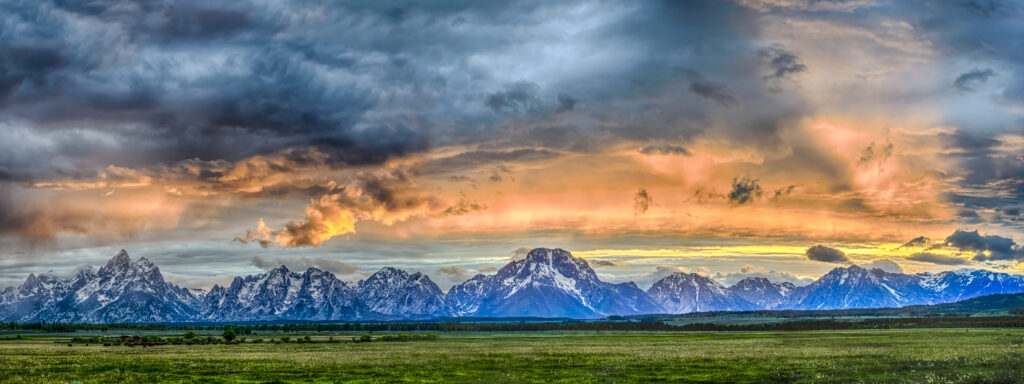If non-human animals can experience bliss, these early July days would be the time it is felt. Wildlife have recovered from their long migrations back to Jackson Hole, hibernators have replenished lost body weight, and many of the hooved animals that spent the winter resisting the cold and snow of our valley, have been eating nutritious, easily digestible green plants since April. The easy, lazy days of summer are felt by almost all of the animals in the Greater Yellowstone ecosystem.
![]()

Now that it is summer, many of the mammal young are mature enough to be able to follow their moms around and keep up. Earlier in the spring (late May and the first half of June), when one may see lone female elk out in the sagebrush, we know that they have calves bedding down keeping a low profile. Elk are very much herd animals, and typically the only time that we see lone cows are when they have a calf bedded down or are about to give birth. If we humans notice this, you can better believe that grizzly bears do too. Elk calves are an important source of spring and early summer food for grizzlies. At this point in the summer, many of the Grand Teton National Park elk young have grown strong enough to keep up with their mothers and are able to join back up with nursery herds of cows and calves. Safety in numbers.

Like elk, doe pronghorn (sometimes called pronghorn antelope) leave their herd to give birth to their twin fawns. A study conducted 20 years ago showed that over 80% of pronghorn fawns are taken by coyotes. Once healthy fawns are three to four weeks old, they can outrun coyotes and any other predator.

Speaking of grizzly bears, you may have heard that the 26 year old female 399 kicked out her 4 two and a half year old cubs, and then promptly bred again this spring. We are already wondering if she will have cubs again in her den this winter. Another well known sow grizzly, 793, had her 3 cubs of the year killed by a male griz. As hard as that is to hear, it is not uncommon for male bears to kill cubs of sows that they have not bred with, and then proceed to breed with her so that she will give birth to his cubs next winter. This behavior leads many female bears to adopt a strategy of breeding with many of the large male bears in the area so that those males won’t mess with her cubs. The males don’t know which cubs are theirs, but they do recognize which females they’ve bred with and who could potentially have his cubs and will hopefully leave them alone.

It would be hard to be a Uinta ground squirrel with every carnivore, from land or air, open to making a meal of one. The young ground squirrels, born in a den in May, are particularly susceptible to predators when they first start foraging above ground in early to mid-June. They are a bit more wary now in July. It’s hard to believe that adult Uinta ground squirrels will start heading into hibernation in a month.

I will be very curious to learn about how our chilly wet spring affected bird nesting. Most years, four or five of the bird nest boxes in my yard have mountain bluebirds, tree swallows, and/or house wrens nesting in them. There is only one pair of tree swallows nesting at my place this year. Perhaps, nesting sites shifted closer to more abundant food sources, like along wetlands, as insect production was slow to get started in the sagebrush grasslands.


Did you see that incredible flower display of bitterbrush shrubs along the Grand Teton Park main road near Moose, Wyoming, the Park headquarters? It really highlighted how that species is so abundant amongst the sagebrush shrubs in that part of the Park. That’s exactly why Moose are so plentiful there in the winter, as bitterbrush is one of their favorite foods.

This time of year is such an incredible time of Hope and new life. The grizzly bears, tree swallows, Uinta ground squirrels, and us humans are holding on tight to these midsummer days of bliss. Enjoy the outdoors and wildlife this summer and savor every fleeting detail that makes this season so special, it will be gone before we know it!
-Kevin Taylor
Want to be the first to know what Kevin notices next? Or when new wildlife tours are launching? Sign up for our Wildlife Expeditions newsletter, Fresh Tracks, to receive the latest wildlife news, exclusive tour discounts, and more!


